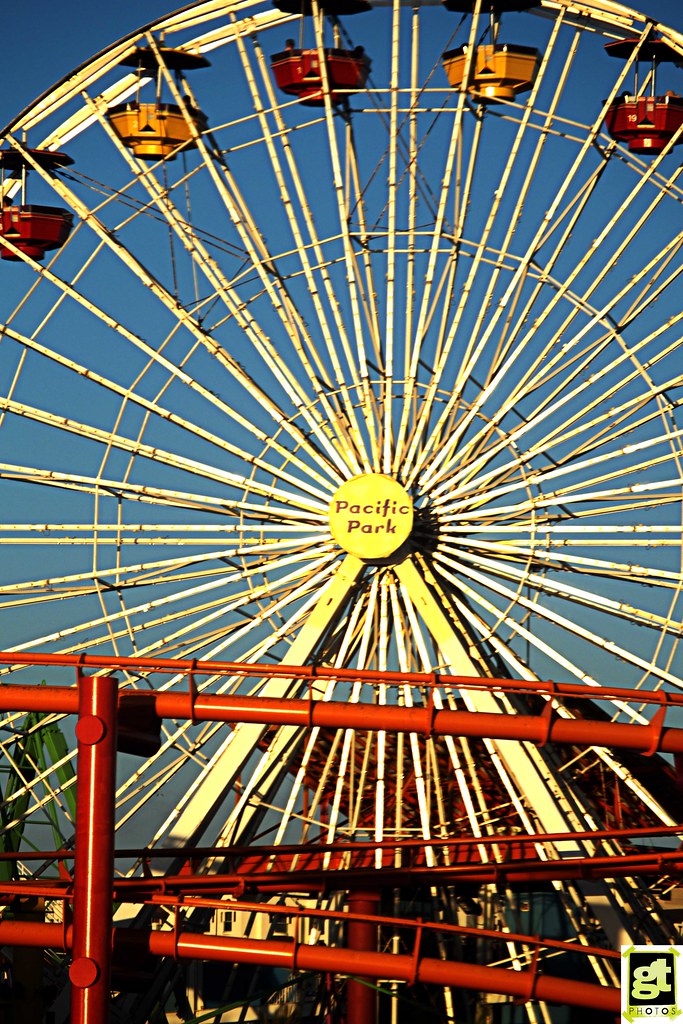Safety First News
Are Carnival Rides Really Safe?

September 4, 2016
Attending the traveling carnival or county fair is an autumn family tradition that draw millions of patrons to temporary amusement parks in Texas annually, but are the rides at traveling carnivals safe? The answer is, “Probably not as safe as you would like.”
Traveling carnivals (county fairs and temporary amusement venues of the like) are not in the same class of amusement parks as, say Disney World and Six Flags, who are subject to frequent and regular federal inspections. If the feds aren’t regulating traveling carnival rides, who is?
"There’s a huge gap in the safety of the public for these traveling carnival rides,” says Texas Watch Executive Director, Alex Winslow. “They are in one place one day and they’re in another place the next week and they’re only inspected once a year.”
A once-a-year inspection policy for these traveling carnival amusement rides is problematic because the rides aren’t stationary like fixed amusement parks. Carnivals may have dozens of stops throughout a state or region during one season and there is no guarantee the rides are taken down and assembled correctly at the next stop, not to mention any checks for damage that may have occurred during transit or stress on the materials due to vibration or temperature and weather variations that can cause metals to expand and contract.
Honor System Regulation
According to the Texas Department of Insurance, the agency in Texas that regulates amusement ride certification, Texas law requires all amusement ride operators to have $1 million liability policy for each ride, for each occurrence, and they must also have an annual safety inspection performed by a qualified third party inspector hired by the insurance company.
After the inspection, the ride is issued a certification sticker that is valid for one year. Who ensures each ride has the appropriate and current certification sticker? Not the Texas Department of Insurance. “We don’t have inspectors who go out and check rides,” says Jerry Hagins, Communications employee in Public Affairs for the Texas Department of Insurance.
Inspections for current certification stickers are up to insurance companies as they see fit. Most insurance companies in Texas aren’t staffed to inspect each and every traveling amusement park ride’s certification, so most insurance companies will merely conduct certificate inspection sampling, if anything at all. With few checks in place to ensure traveling carnivals are keeping ride certifications current, it means the traveling carnivals are left to regulate themselves, which is a huge concern.
The traveling Carnival loophole can be linked to the Consumer Products Safety Act, which specifies no federal inspection requirements for fairs and carnivals. Some states like Texas and Oregon have moderate regulations involving a third party (insurance company) to determine safety and certification, which is a sampling at best. Other states like California, Washington, New Jersey and Pennsylvania have much more stringent regulation to assure safety, with armies of trained inspectors to frequently check traveling carnival rides. However, in Alabama, Mississippi, Nevada, South Dekoda, Wyoming and Utah, no regulation whatsoever is required to assure safety of patrons.
How is the traveling carnival loophole working?
The Consumer Product Safety Commission (CPSC), who studies emergency room admissions, documented a dramatic increase in amusement ride accidents from 2007 to 2012. Even though the data includes both permanent amusement parks and traveling carnivals, the agency found the data notable:
- 2012 – an estimated 44,000 injuries on amusement rides
- 2013 – 4,300 injuries estimated
- 2014 – 4,500 injuries estimated
- 2015 – 4,800 injuries estimated
The data likely does not show the true magnitude of the problem since traveling carnivals are under no regulatory requirement to report incidents.
According to the International Association of Amusement Parks and Attractions (IAAPA), only 7% of traveling carnivals presently report any sort of incident or injury data. Said another way 93% of traveling carnivals (i.e., nearly all of them) are difficult to assess from a safety standpoint based on loss data (because they aren’t shared). Patrons have no way to objectively know if the traveling carnival has a genuinely clean safety record or a horrible one because the data isn’t available.
However, 7% of the data is available for analysis, and based on that data, the IAAPA says traveling carnival injuries are increasing by up to 12% per year. A “safe” carnival can attract more patrons and generate more revenue so traveling carnivals have incentive to keep incidents and injuries close to the vest as much as possible as yesterday’s incident in Memphis, Tennessee suggests.
September 3, 2016 – Memphis, Tennessee: Eight people were sent to hospitals and six others were injured after they fell from a malfunctioning fair ride on Saturday afternoon at the annual Delta Fair, according to the local CBS affiliate WHBQ.
According to the report, Delta Fair owner Mark Lovell told WHBQ that a ride operator prematurely released the restraints on the MoonRaker ride. He said no one suffered serious injuries. However, witnesses and riders said otherwise.
Shawn Owens told WHBQ he watched his children and his 11-year-old niece fall 30 feet from the MoonRaker ride at the Delta Fair in Memphis. He said the ride operator and fair officials tried to get the kids to "walk it off." The Shelby County Sheriff’s Office said 14 people were thrown from the ride, but Delta Fair management says the Sheriff’s report is “wildly exaggerated.”
Which rides are most dangerous?
It likely comes as little surprise that roller coasters are the worst culprit for injuries to passengers, accounting for 16 out of 51 amusement park deaths over a thirteen-year study by the CPSC.
Surprisingly, though, the otherwise “pedestrian,” non-thrill ride class of carrousels and merry-go-rounds accounted for 21% of all park injuries, according to the medical journal Clinical Pediatrics.
Also a surprise, inflatable attractions like bounce houses and slides were found to have a statistically significant upward trend of catastrophic injuries that require hospital care, according to a study by the CPSC.
Recent traveling carnival incidents
May, 2016 – El Paso, Texas: A 16-year-old girl was hurled to her death from a spinning ride called the Sizzler. Two other people on the ride were injured. The ride was part of a traveling carnival, set up in a church parking lot in El Paso, Texas.
May, 2016 – Omaha, Nebraska: An 11-year-old girl had her hair and scalp torn from her head after her hair became entangled in a spinning carnival ride. Apparently, the girl was not secured properly to her seat and she began slipping from it at the ride starting building speed. She eventually slipped entirely from her seat and her hair was snared by machinery and twisted until her scalp was ripped away from her head. The ride operator ran from the scene.
July, 2016 – Winchester, Virginia: A 47-year-old woman was injured when a traveling carnival ride malfunctioned, sending her plummeting 40 feet to the ground at the Frederick County Fair near Winchester, Virginia. The woman was riding the SuperShot, a free-fall ride where riders are supposed to enjoy a leisurely ascent to the top of a tower while seated, then dropped suddently before decelerating midway down the tower and gently lowered to ground level. Instead, according to Frederick County Sheriff’s Office, the woman’s seat had come completely undone during the ascent, sending her plunging to the ground.
August, 2016 – Greenville, Tennessee: Three girls fell 35 to 45 feet from a traveling carnival Ferris wheel when their basket upended. Eyewitnesses said the basket appeared to become “stuck,” so as the Ferris wheel turned, the basket slowly overturned, like pouring wine from a glass. The girls “bounced off the metal bridging of the ride and eventually hit the ground.” The girls were taken to an area hospital where they were reported to be “responsive.” An unofficial report of the cause, according to authorities, was a malfunctioning bearing.
September, 2016 – Chicago, Illinois: Six children (five of which were between the ages of 5 and 7) on a roller coaster at the 87th Street Carnival were injured when the ride came to an abrupt and unexpected stop, resulting in the children receiving head trauma, according to authorities. All children were taken to area hospitals and are said to be in good condition. Carnival staff is denying anything happened at all.
What can be done to ensure safety?
- Be the inspector: Ultimately, you have to take responsibility for your safety, so be observant and trust your instincts. Look for an up-to-date permit for the ride if you can find it. Are the lights not working? Is the ride not freshly painted? Does the operator look unpleasant? If so, you are probably at an unsafe traveling carnival.
- Follow the rules: Follow all directions on posted safety signs. Those age, height and weight restrictions aren’t arbitrary. They are carefully determined based on how a ride’s restraints are designed.
- Observe health restrictions: If you’ve had a recent surgery or illness, have a heart condition, are pregnant or have high blood pressure or aneurysms, don’t ride.
- Use the safety equipment: Don’t loosen restraints or other safety devices for comfort or that “extra thrill.”
- Be patient: Remain in your seat until the ride comes to a complete stop and the operator instructs passengers to exit the ride.
- Assess children: Ensure your children are able to understand safe riding behavior. Otherwise, wait until next year (then reassess).
- Don’t force it: Never force children onto a ride they don’t want to take, even when the ride appears harmless. Experts say children naturally will try to get away from objects they fear, which may result in injury once the ride starts.
- Contain yourself: It’s important to keep hands and feet inside the ride at all times.
- Check the restraints: If they look worn, torn, shaky, or anything but secure, get off the ride before it starts.





